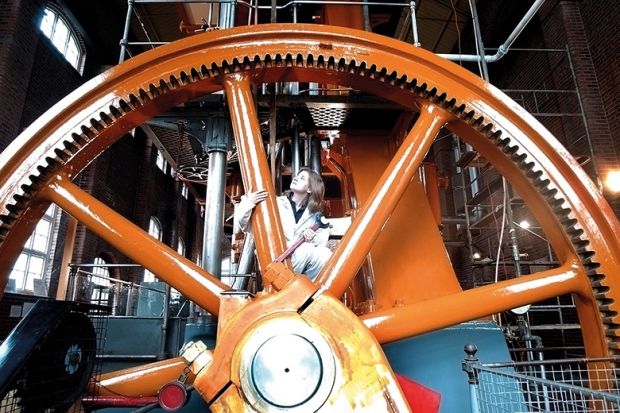Women now make up a quarter of those gaining a postgraduate research degree in engineering at UK universities, according to new data that may show that campaigns for more gender balance in the subject could be working.
Figures from the Higher Education Statistics Agency show that the number of women getting a qualification like a PhD in engineering and technology in 2016-17 was up 26 per cent compared with 2012-13.
Engineering has typically had one of the worst records for gender balance. In 2012-13, 23 per cent of those getting a postgraduate research degree were women. However, the year-on-year growth in numbers means the share was up to 25.1 per cent last year. In computer science women now also make up a quarter of postgraduate research graduates after a rise in numbers compared with 2012-13.
However, in physical sciences, the number of women graduating at the higher level has grown by only 1.2 per cent since 2012-13 while, for men, there was a rise of almost 13 per cent, causing the female share to fall to 36 per cent.
Dame Athene Donald, master of Churchill College, Cambridge and a professor of experimental physics, said that, despite the share of girls studying A-level physics staying fairly constant in recent years, the data suggest “that a larger proportion" were now going on to study engineering.
“I suspect this may be because engineering is becoming more obviously a career option open to girls in a way which, perhaps, a decade ago it was not,” she said.
James West, executive director of the South East Physics Network (SEPnet), a group of physics departments in south-east England, also said that the difference between physics and engineering PhD numbers could be down to how the subjects are viewed as potential career routes.
“A lot of the pure science degrees don’t lend themselves to a particular career path [but] engineering does, and computer science does too. Perhaps young women, when they are making decisions about their careers, [are being influenced by this],” he said.
However, he added that a lot of work had been done in physics departments in recent years to improve the environment for female students and it may be that the results of this had yet to show up in PhD data, which had a long time lag.
Dame Athene added that the gender balance in physics and engineering would only “change substantially” once societal attitudes about girls studying such subjects were changed at a younger age.
Helen Wollaston, chief executive of WISE, which campaigns for gender balance in science, technology, engineering and mathematics subjects, said that this is where the organisation had been focusing some of its efforts by working with SEPnet to develop school resources aimed at 11- to 14-year-old girls “featuring young female role models who are using physics in a job they love”.
“There is a need to make physics teaching more relevant to girls at secondary school so that more choose the subject at A level and beyond,” she added.
The Hesa data show that across all science subject areas, there was a similar increase for men and women gaining postgraduate research qualifications of about 9 per cent.
Biological sciences – where women made up 61 per cent of postgraduate research graduates in 2016-17 – saw increases for both men (up 13 per cent since 2012-13) and women (up 12 per cent).
Find out more about THE DataPoints
THE DataPoints is designed with the forward-looking and growth-minded institution in view
Register to continue
Why register?
- Registration is free and only takes a moment
- Once registered, you can read 3 articles a month
- Sign up for our newsletter
Subscribe
Or subscribe for unlimited access to:
- Unlimited access to news, views, insights & reviews
- Digital editions
- Digital access to THE’s university and college rankings analysis
Already registered or a current subscriber? Login








